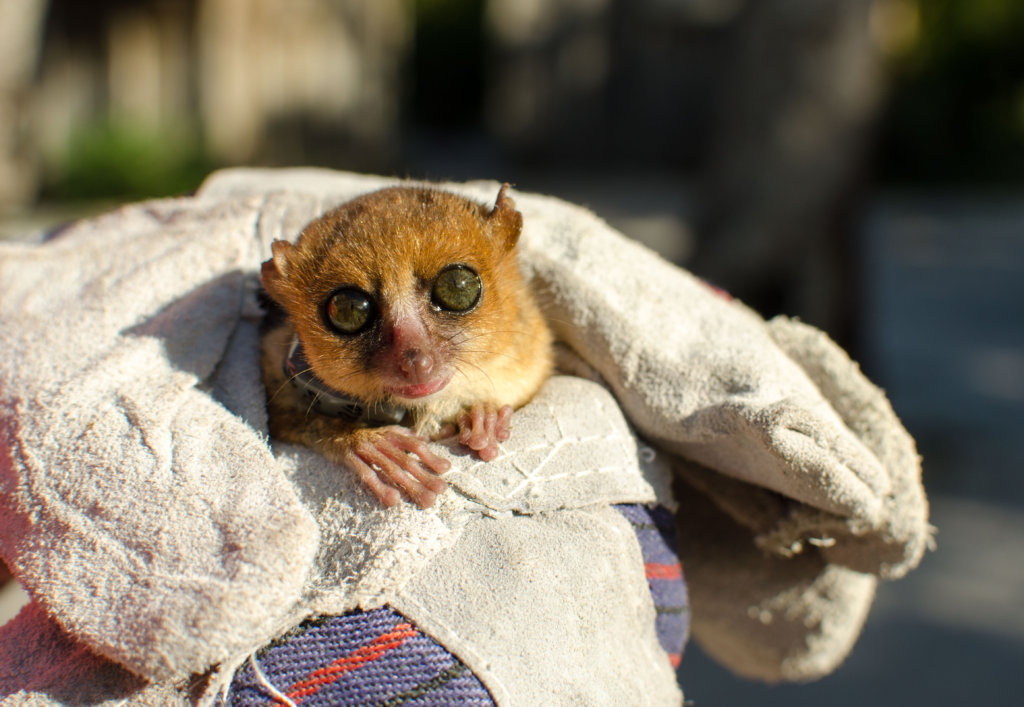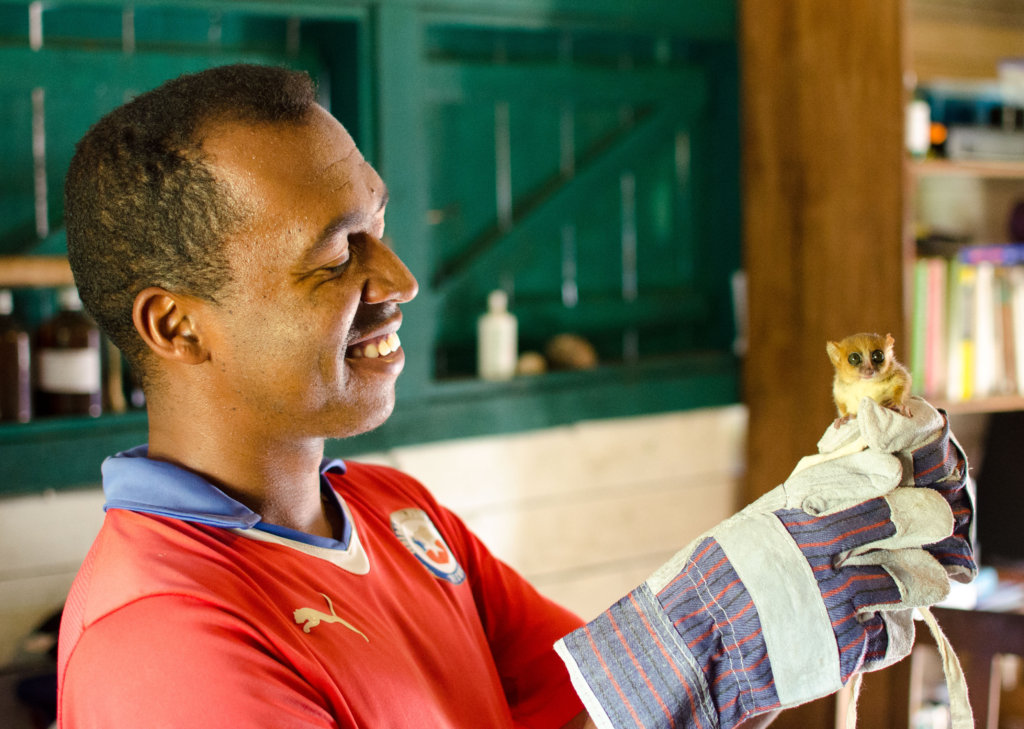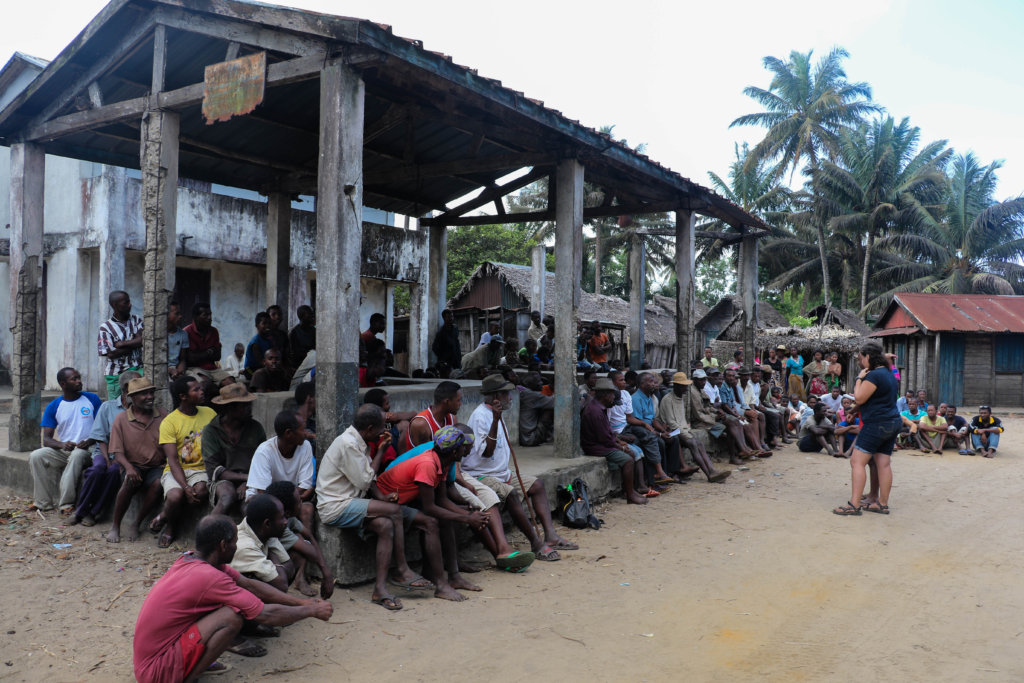By Georgie Vanner | Project Development Intern
The past few months have been exciting times for SEED Madagascar’s research team as they continue their work on confirming a new species of mouse lemur in the forests of Sainte Luce!
Working with a new direct capture method, the team caught a total of 12 mouse lemurs who were then taken to the research centre to be measured and genetic samples taken from hair on the stomach and the tips of the ears.
These samples are currently awaiting export to the German Primate Center for analysis – the final step needed to confirm the mouse lemur as a new species after many months of research!
As well as confirming the new species, the team are also keen to understand more about the territory sizes, home ranges and ecological details of the species, such as social structure, activity schedules and feeding ecology. To do this, they fitted tiny radio tracking collars on eight of the captured mouse lemurs, making it easier to find them in the forest and data collection more efficient.
This research is key to confirming a new species and learning more about them, but it’s also important to improve understanding of the species’ wider distribution, and so they have been surveying the more remote forest fragments that together make up the Sainte Luce littoral forests. Although this is much more in the long term, the team have already confirmed the mouse lemur’s presence in 6 forest fragments as well as some of the tiny forest remnants which are now isolated from the main fragments. This will run alongside our ongoing research into population density data from three of the most important forest fragments.
The team have also been looking at establishing corridors to rejoin the fragments where the mouse lemurs are living and have been growing acacia seedlings in our on-site nursery to prepare them for replanting in four corridor sites between isolated fragments. These corridors will reconnect lemur habitats and allow them to move more easily between fragments, therefore reducing their risk of extinction.
We have a holistic approach to conservation and a crucial aspect of this project is community engagement and knowledge sharing. Project Microcebus has conducted a community meeting in Sainte Luce to talk about project progress, research findings and most significantly, the importance of forest conservation. The project has also included an education session to raise awareness of mouse lemurs amongst the younger generation in the local free conservation club. The session aimed at increasing the children’s understanding of the new species of mouse lemur and the importance of its conservation.
Project reports on GlobalGiving are posted directly to globalgiving.org by Project Leaders as they are completed, generally every 3-4 months. To protect the integrity of these documents, GlobalGiving does not alter them; therefore you may find some language or formatting issues.
If you donate to this project or have donated to this project, you can receive an email when this project posts a report. You can also subscribe for reports without donating.


